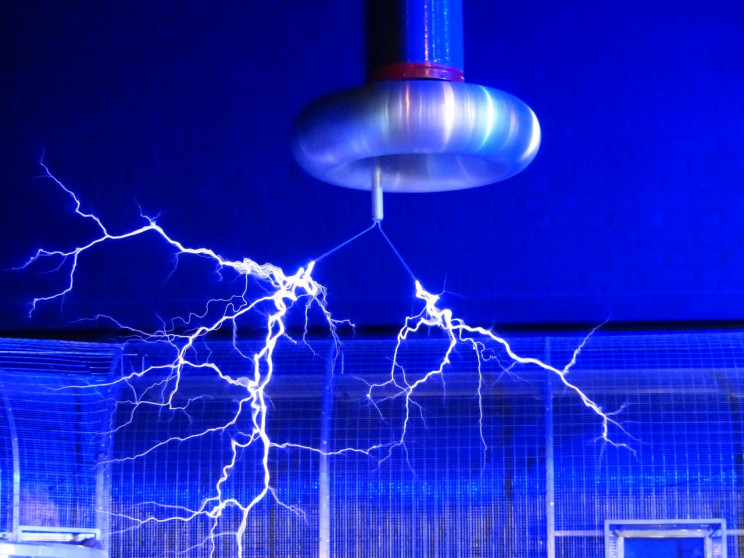


The world is moving fast but did you ever wonder how to measure the energy of a moving object?
To accelerate an object requires the application of force. And the application of force is, quite literally, work. When work is done on an object, energy is transferred. The energy that is transferred is known as kinetic energy and it depends on the mass and speed of the moving object.
Kinetic energy is the measure of work done by any object when it moves, it is defined in terms of mass (m) and velocity (v). The motion of an object can be horizontal, vertical, elliptical, etc., but kinetic energy applies in every case where there is motion.
Kinetic energy is a scalar quantity. This means that it is independent of the direction of an object, and is only described in terms of magnitude. The equation for kinetic energy is:
KE = ½ mv2
We can see from this that, when the mass (m) of an object increases, so does its kinetic energy, and when the velocity (v) of an object is doubled, the value of kinetic energy increased by four times. Therefore, the kinetic energy is directly proportional to an object's mass and velocity.
The SI (International System of Units) unit of Kinetic energy is Joule (Kg.m2.s-2 ) and in CGS (centimeter–gram–second system), it is defined in terms of erg (10-7 Joule or gm.cm2.s-2)
The work-energy theorem states that the total work done on a system is equal to the change in kinetic energy of the system.
Wtotal = ΔK
Work is equal to the change in kinetic energy (Δ K). When a force (F) is applied to an object of mass (m) then the work (W) done to move the object by a distance (d) on the surface is given as:
W=F * d where
F = mass (m) * acceleration (a) so
W = m * a * d
To derive the kinetic energy equation, we also the kinematic equation,
v2 = u2 + 2a *Δd where
(u) is the initial velocity, (v) is the final (v) velocity and (Δd) is the displacement. Solving for acceleration gives us:
a = F/m and
F/m = (v2 - u2)/2Δd
F * 2Δd = m (v2 - u2)
F *Δd = m (v2 - u2) / 2
Since an object at rest has zero velocity, this can be simplified to:
F *Δd = mv2/ 2
F *Δd = ½ mv2
Since F *Δd is the equation for work, and work is equal to the change in kinetic energy (ΔK), we have:
W = ½ mv2


Depending on the parameter taken into account, there are two ways in which kinetic energy can be categorized:
1. On the basis of movement
Objects show different kinds of motion, from vibrating quantum particles to the large rotating turbines.
This is the energy due to the movement of a rigid body in a straight line Examples include the motion of a bullet, an apple falling from a tree, etc.
Vibrational kinetic energy is simply the kinetic energy of an object due to its vibrational motion. The vibration of a cell phone in your pocket, or a drum when it is hit by a hand or stick are both examples of vibrational kinetic energy.
Rotational kinetic energy or angular kinetic energy is kinetic energy due to the rotation of an object, and is a part of its total kinetic energy. Rotational kinetic energy can be expressed as: Erotational=12Iω2">Erotational= ½ I ω2 where (ω">ω) is the angular velocity, (I">I) is the moment of inertia around the axis of rotation, and (E) is kinetic energy.
Common examples of this type of KE is the rotation of the Earth, and the movement of a flywheel.
2. On the basis of energy
The nature of kinetic energy also depends on the amount and type of energy in the system, and the effect this has on the motion of particles in the system.
The thermal kinetic energy of an object or system is that part of its internal energy that is responsible for the temperature of the system and is involved in heat transfer. Thermal energy is generated due to the motion of atoms when they collide with each other. Examples of thermal energy are: The movement of heated water in a swimming pool or hot water springs is an example of thermal kinetic energy.


An electric current is a form of energy that results from the motion of free electrons. Lightning and light bulbs in use are examples of electric energy in motion.
Radiation can be defined as small (subatomic) particles with kinetic energy that are radiated or transmitted through space. Examples of radiant energy include ultraviolet light, gamma rays, or the heat from a fireplace when it warms a room. Absorption in nuclear reactions and particulate radiation is a process of taking up kinetic energy of particles or the combination of particles with an atom, a nucleus, or another particle.
Sound is a form of vibrational kinetic energy that can be heard. Sonic kinetic energy produces moving energy by using longitudinal waves. Common examples are music, speech, etc. In a vacuum, there is no sound, because there is no medium to transmit the vibrations.
Potential energy is the energy possessed by an object, or body, by virtue of its position relative to others. It can also be produced due to internal stresses, electric charge, and other factors. It is a measure of how much stored energy an object has.
The change in the potential energy of an object can also be considered in different configurations. For example, the gravitational potential energy of a ball will change depending on how far it is from the center of the Earth — a ball that is on top of a tall mountain has more potential energy than one that is two feet off sea level.
Other examples of systems which store potential energy include electrically charged particle near or far from another charge, and a rubber ball which can be squashed or stretched.
The potential energy (U) of a body at some point (x) is defined as the work done on the object by an extra, imposed force to move it from a reference position to its current position. This reference point is called the "zero point" of potential energy.
There are a number of different types of potential energy, including gravitational potential energy (in a uniform field or due to two point masses, electrical potential energy (due to a point charge or in a uniform field), magnetic potential energy, and the potential energy stored in a stretched or compressed spring.
